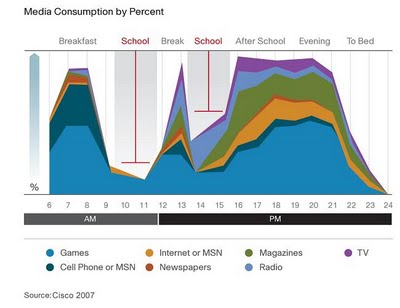This assignment is about developing a taste for the relational design and process aesthetics of organisations, with a focus on its visual aspects and visual representation. All students develop a design for an organisation, with a metaphorically informed organogram as driving medium.
The assignment consists of several chapters:
• Organisational metaphors (=> of biological, military, scientific, religious or other nature; drawing organograms) For next week: come up with three to five types or (hybrid) metaphors of organisations and draw their organograms. Collect inspiring organograms, or other process maps. 
A non imaginative organogram, depicting the different parts of a generic sportsclub and their hierarchical relations.

The metaphor could be read both ways: is this a circuit diagram that describes a relationship ? Or is the metaphor of a relationship used to describe the function of the different elements in the circuit ?

A metaphorically informed organogram, mapping the characteristics of the star signs onto the body parts, and conversely mapping the functions of the body organs onto the star signs.
• Relational design (=> hierarchies, agencies, affordances, deliberate differences and similarities, relations between humans and non-humans; refining organograms)

Source: Tom Williamson – www.twitter.com/floppyarms
This image is metaphorically informed by the underwater landscape of a tropical laguna (but maybe unintentionally). This is where it came from.

This is the basic model of Architecture of Interaction, applied to a work of Lino Hellings. It is metaphorically informed by cellullair life. Allthough the metaphor does not really talk on the functional level, it does add a useful perspective: it suggests to look at the work as a micro-ecology.
 This model is a timeslice through the model above. This depicts the relations in a participatory work at a specific moment in the process.
This model is a timeslice through the model above. This depicts the relations in a participatory work at a specific moment in the process.
• Process design (=> procedures for acting as an organisation: What are the spatial and temporal characteristics of the organisations’ behaviour ? How are decisions made? To what external stimuli does the organisation react? who/what works with what information? What processes are documented ? Which aren’t ? What are the interesting constraints ? Students make flowcharts of the major actions the organisation should be able to perform in response to certain internal or external stimuli.

Fox Organised Crime figure organisational flowchart. A relational diagram, but hardly metaphorically informed. This is the source.
• Communication, both externally and internally. Students explore the use of different media by the organisation: tools. senses, sense-prothesises, languages or sign systems for both communication between different elements that are part of the organisation, but also between the organisation and (designated) elements of the outside world.

This image came from this site.
• Goals and/or effects (=> only when the students have developed their taste for interesting, beautiful or horrific organisations, and have come up with possible forms and processes, they start to decide on the desired goals and/or effects of the organisation.)

